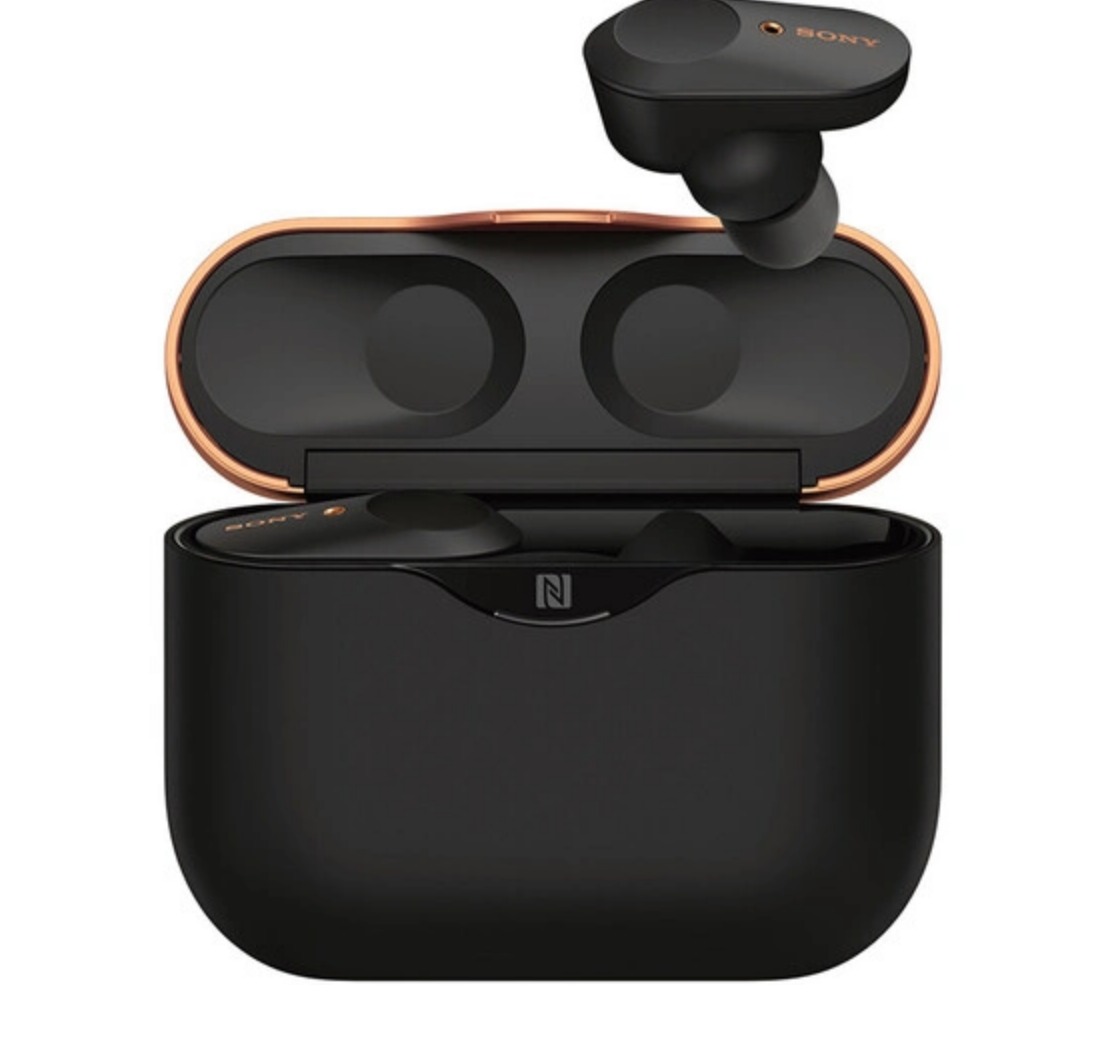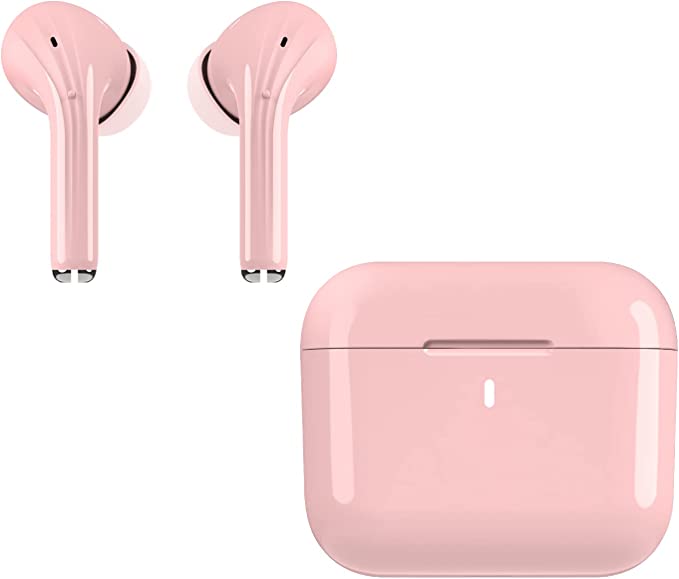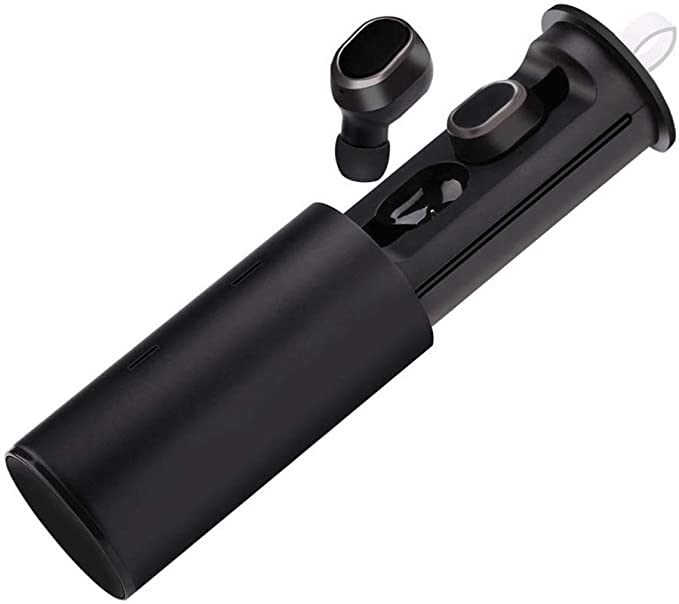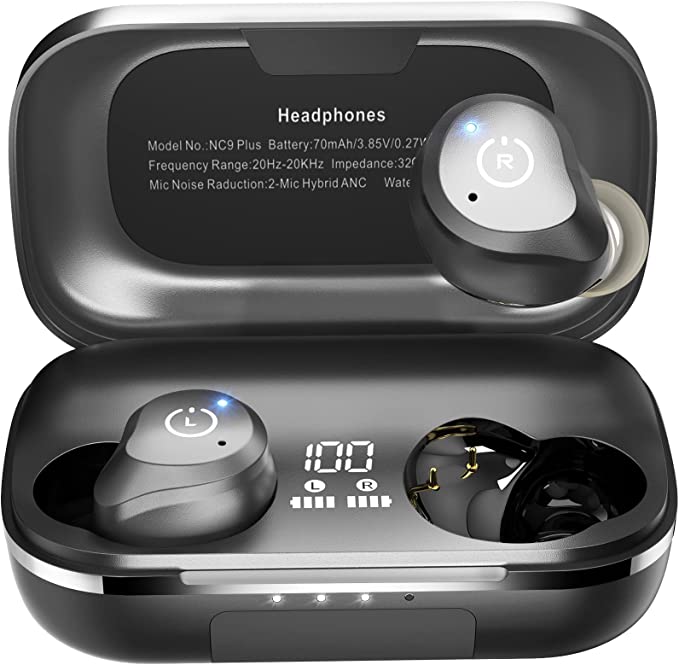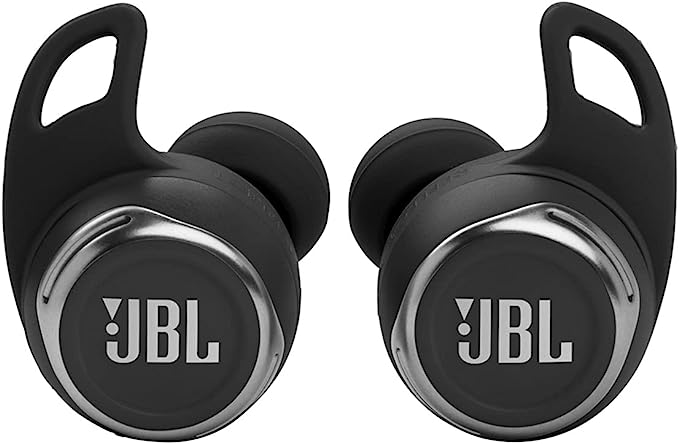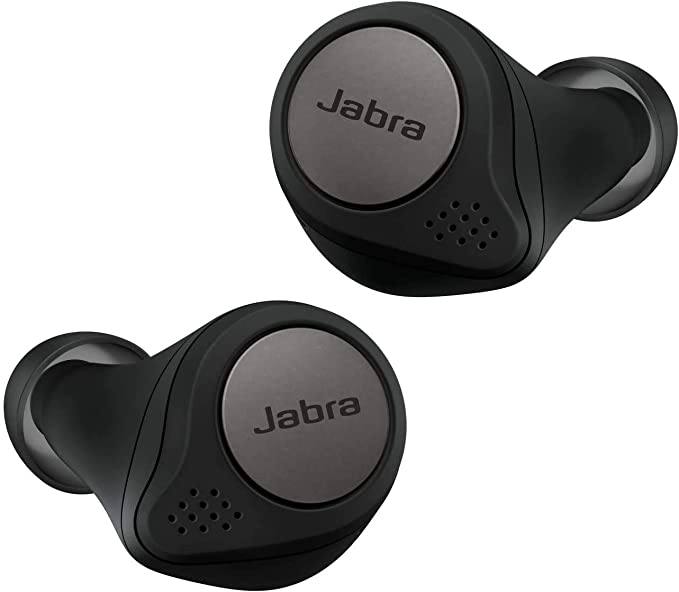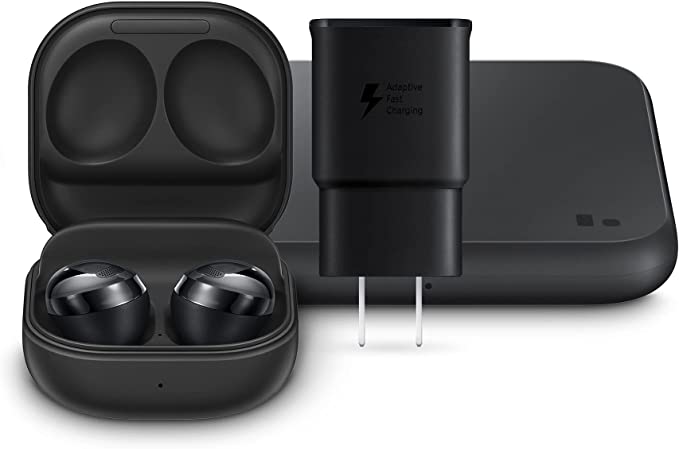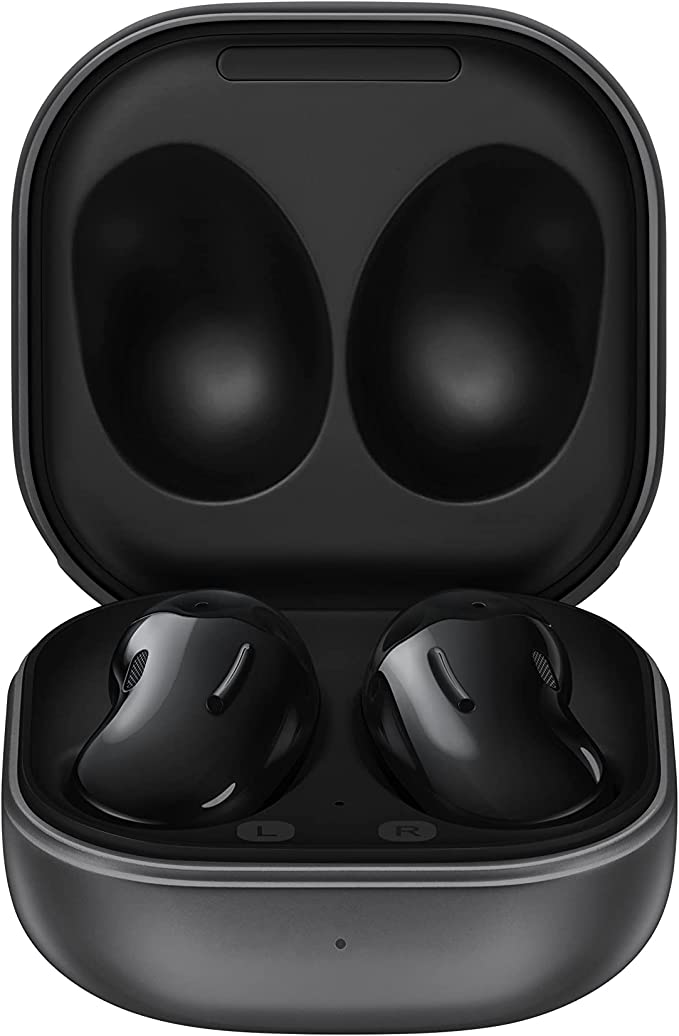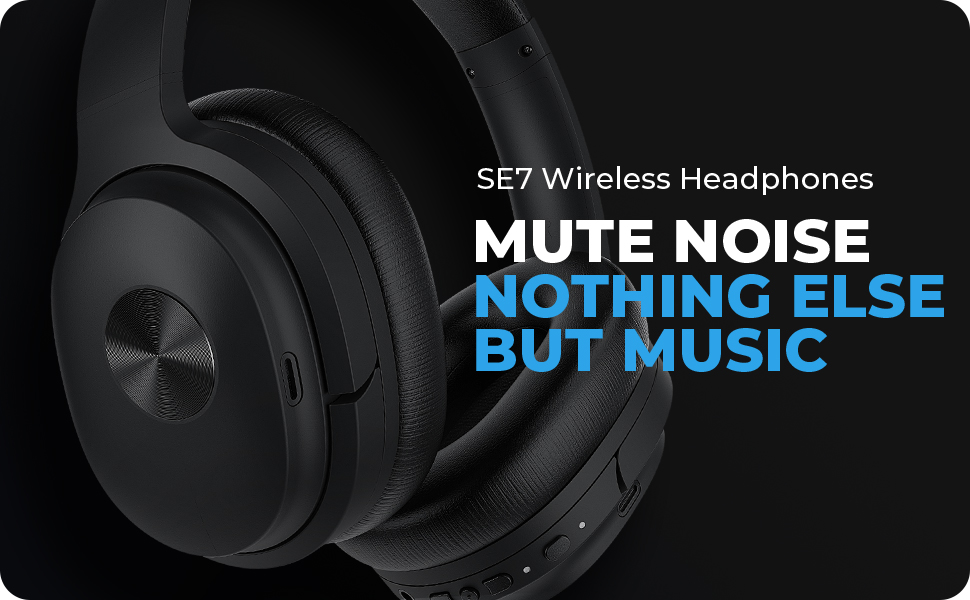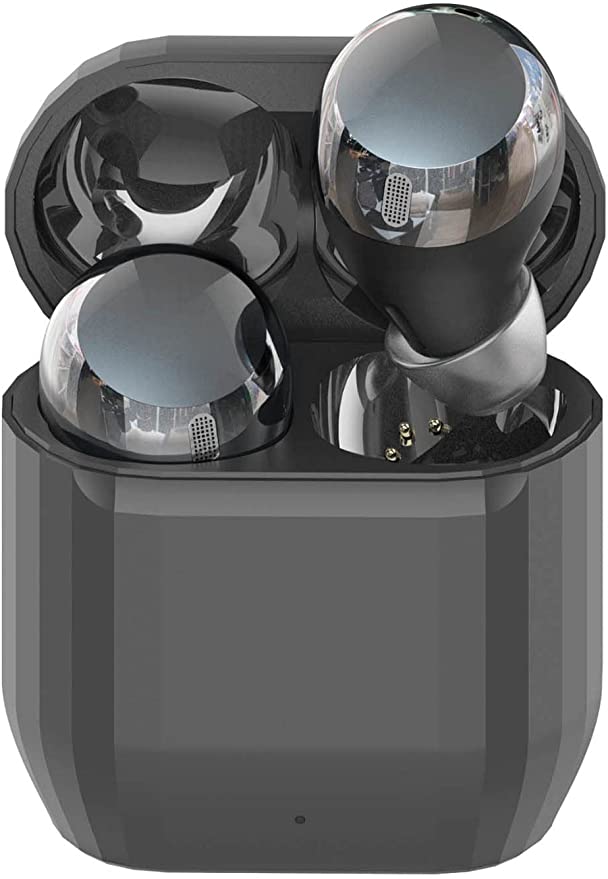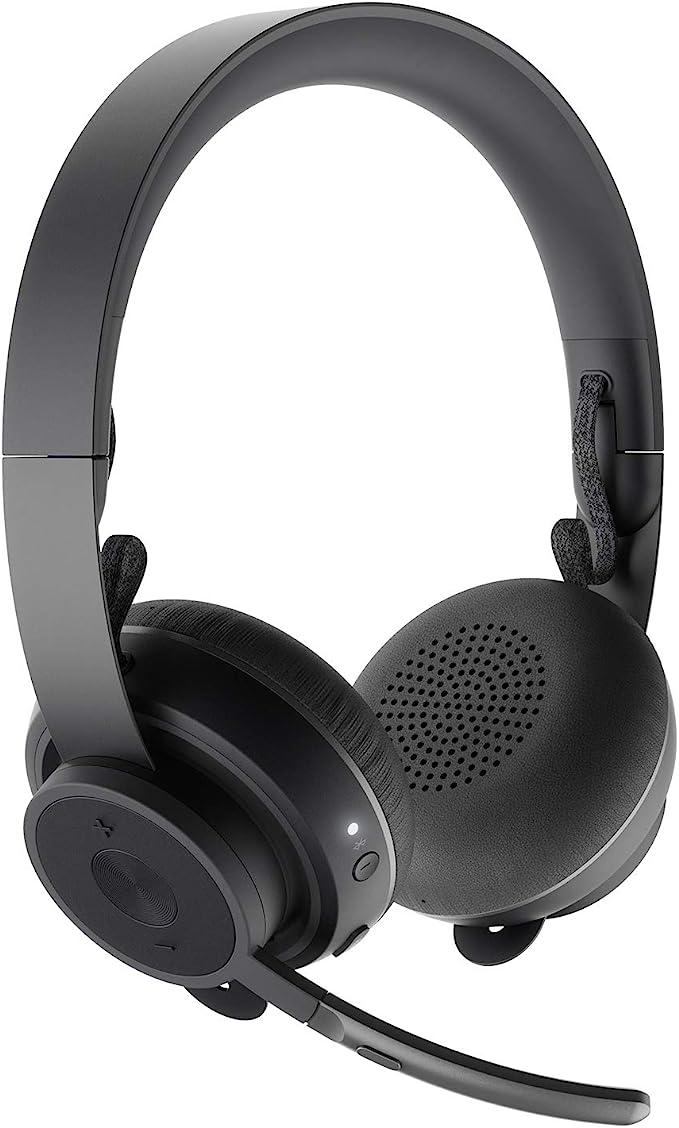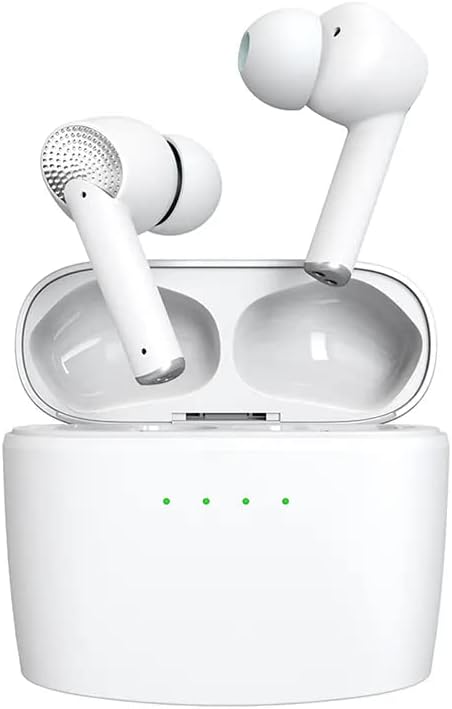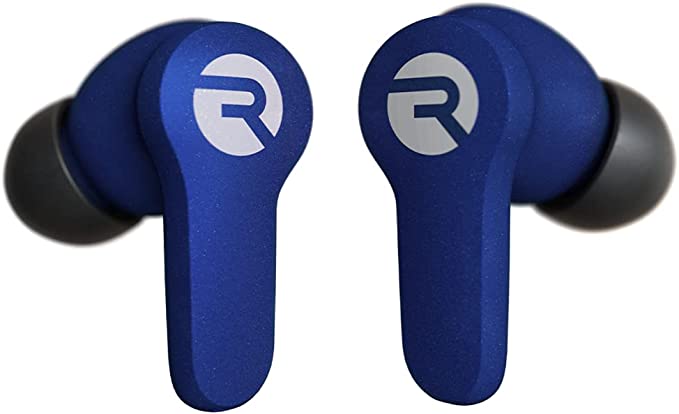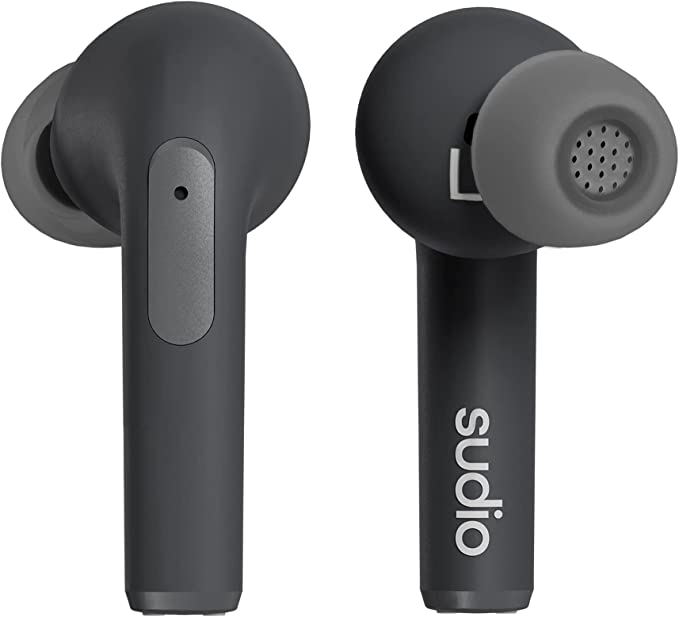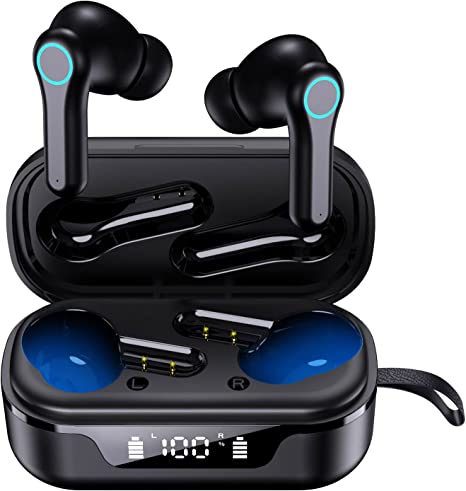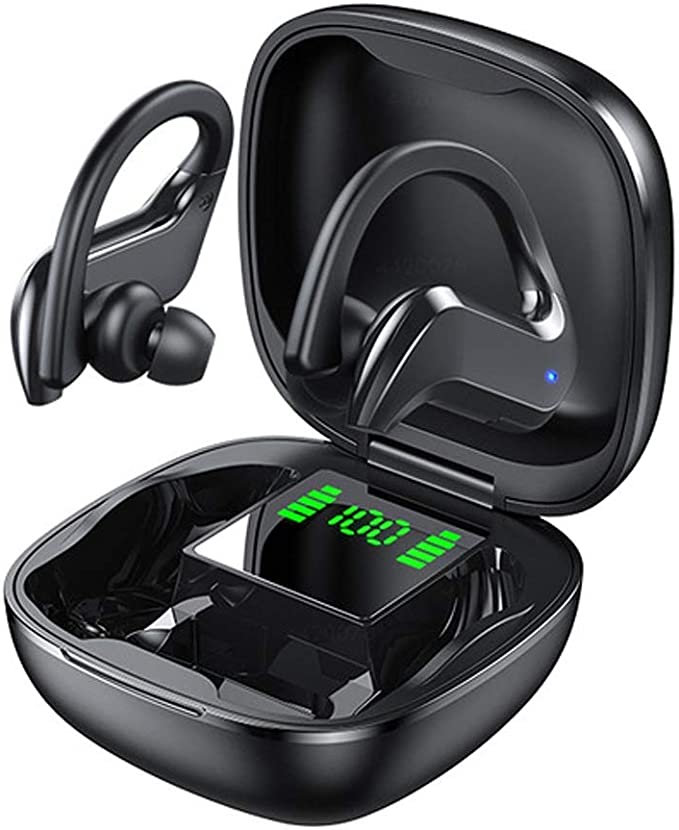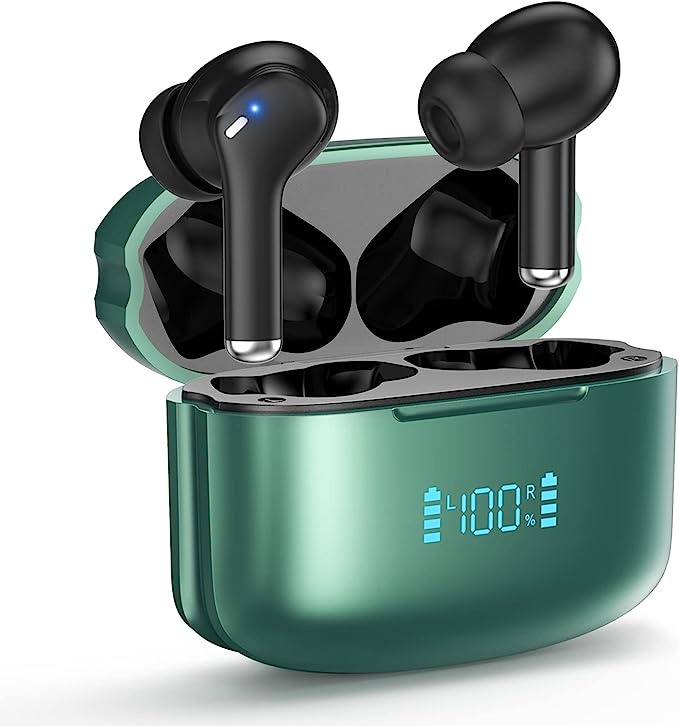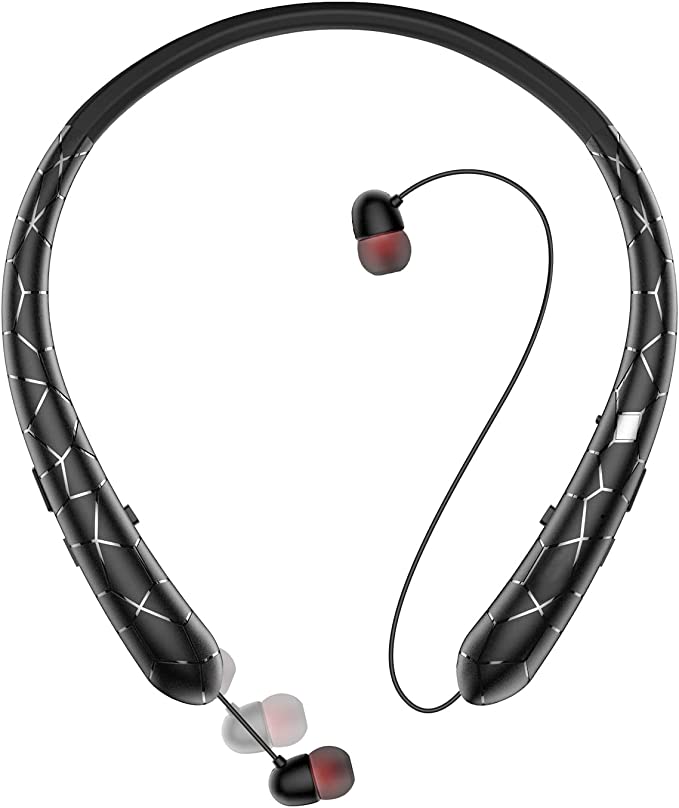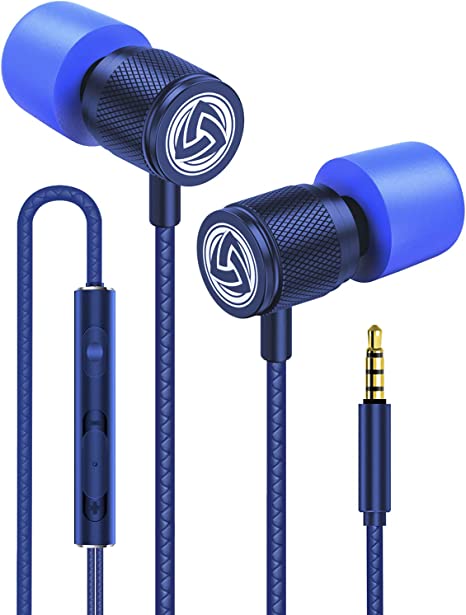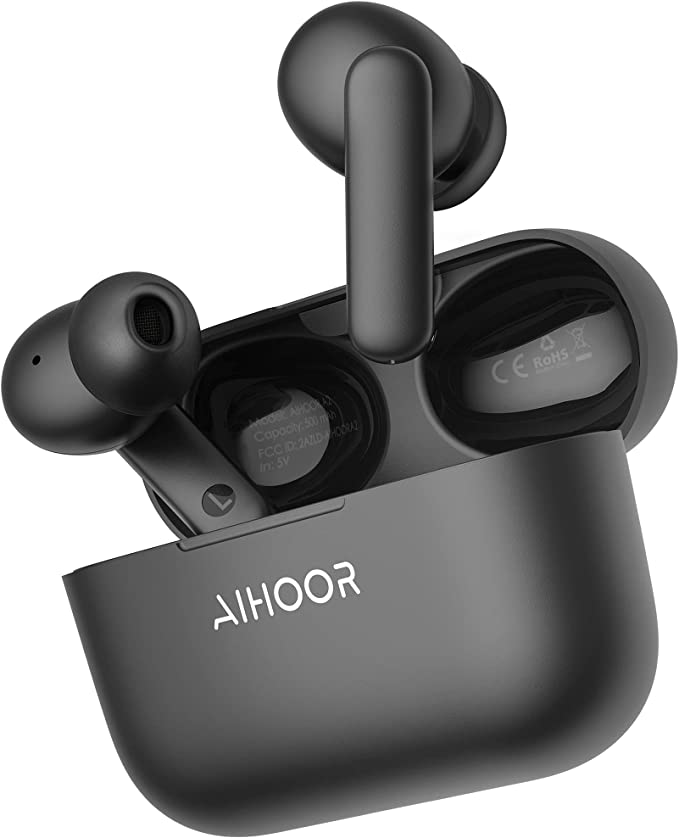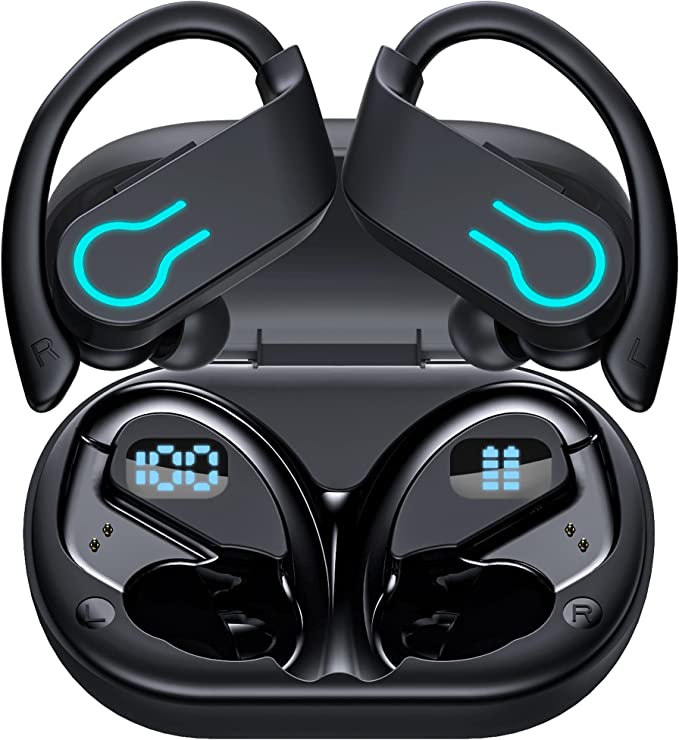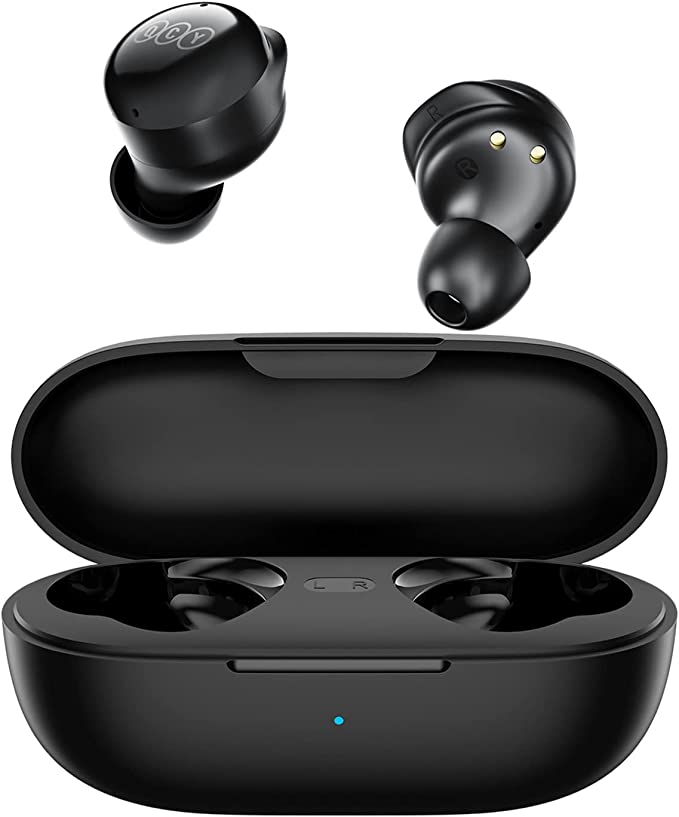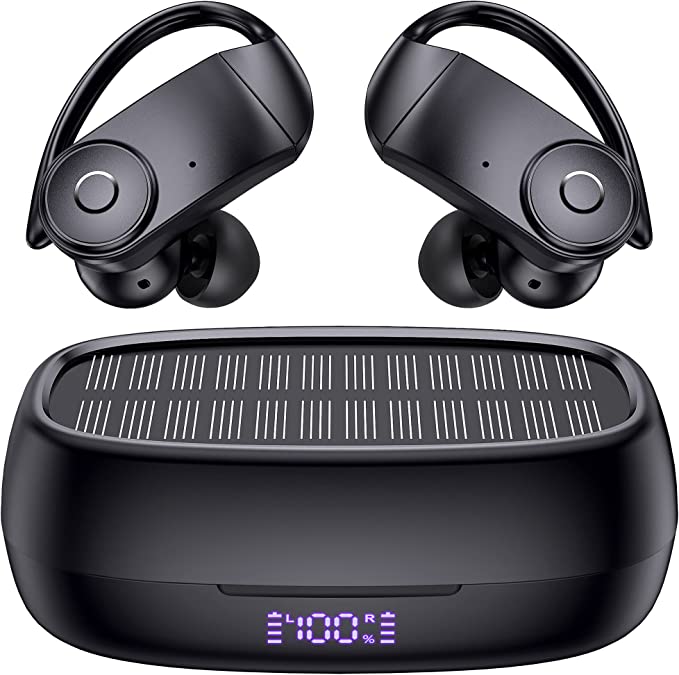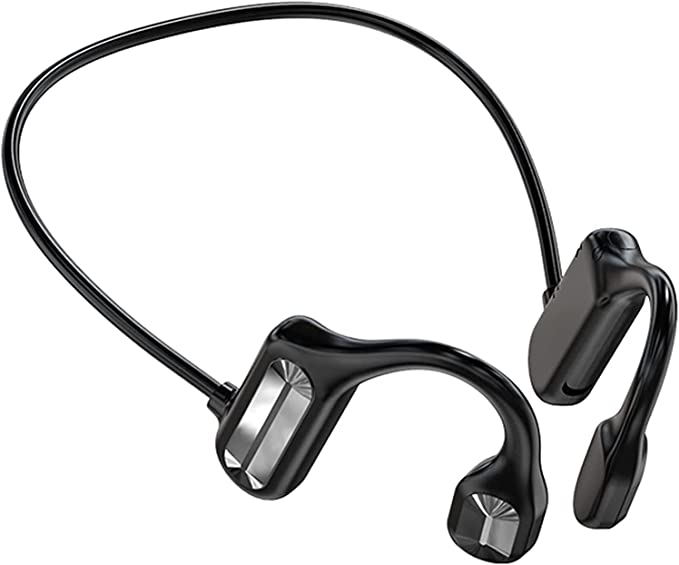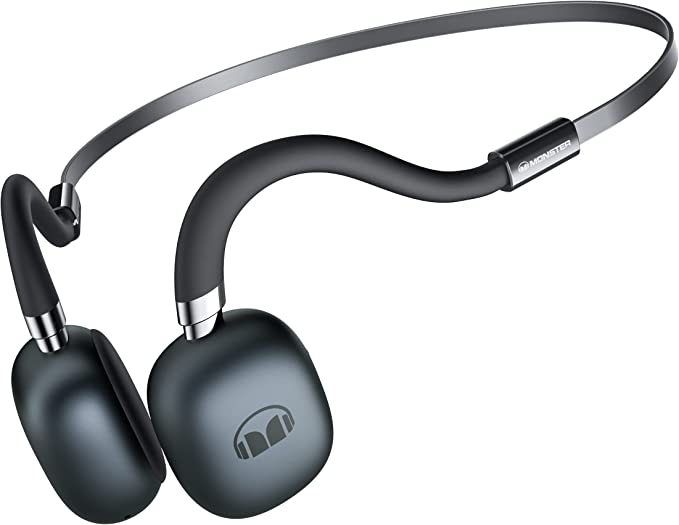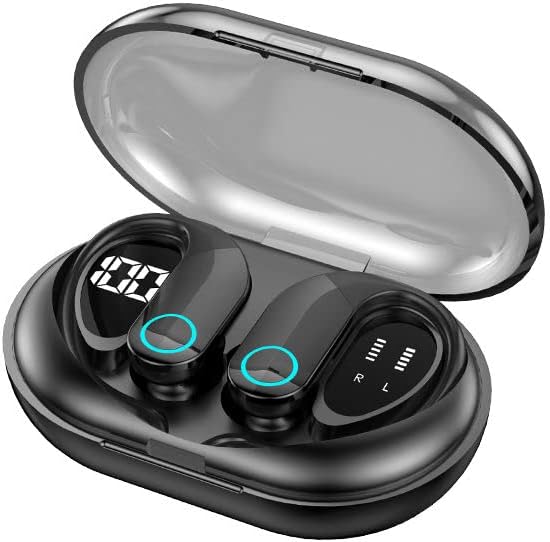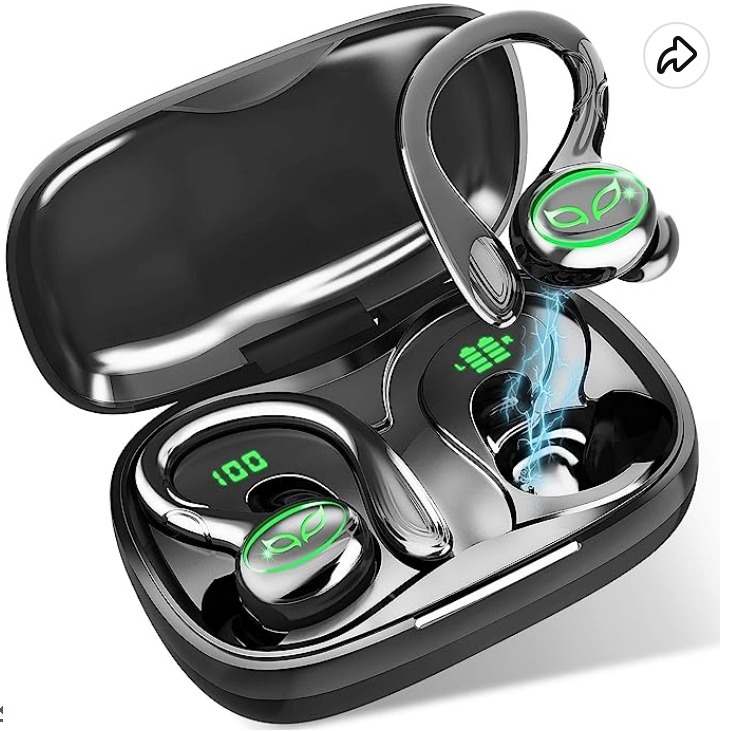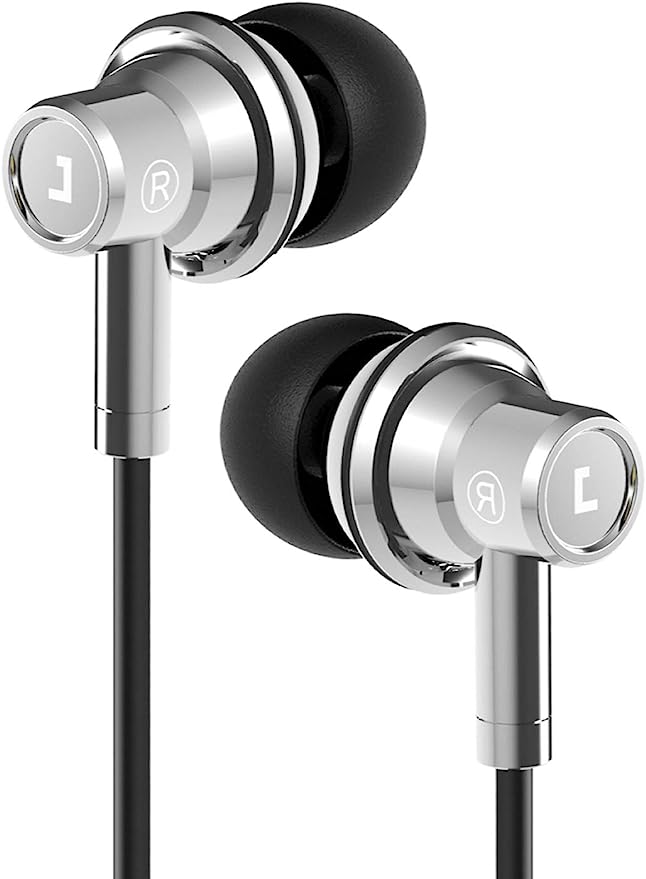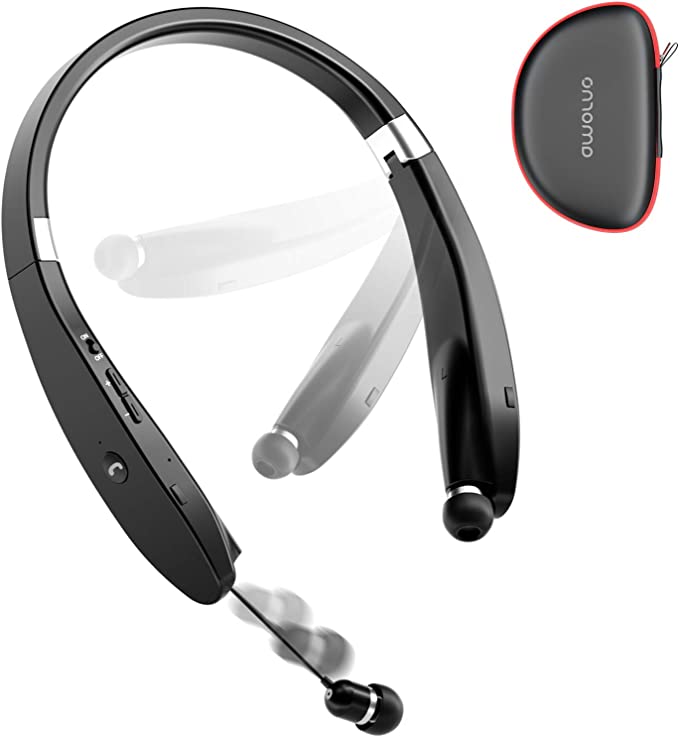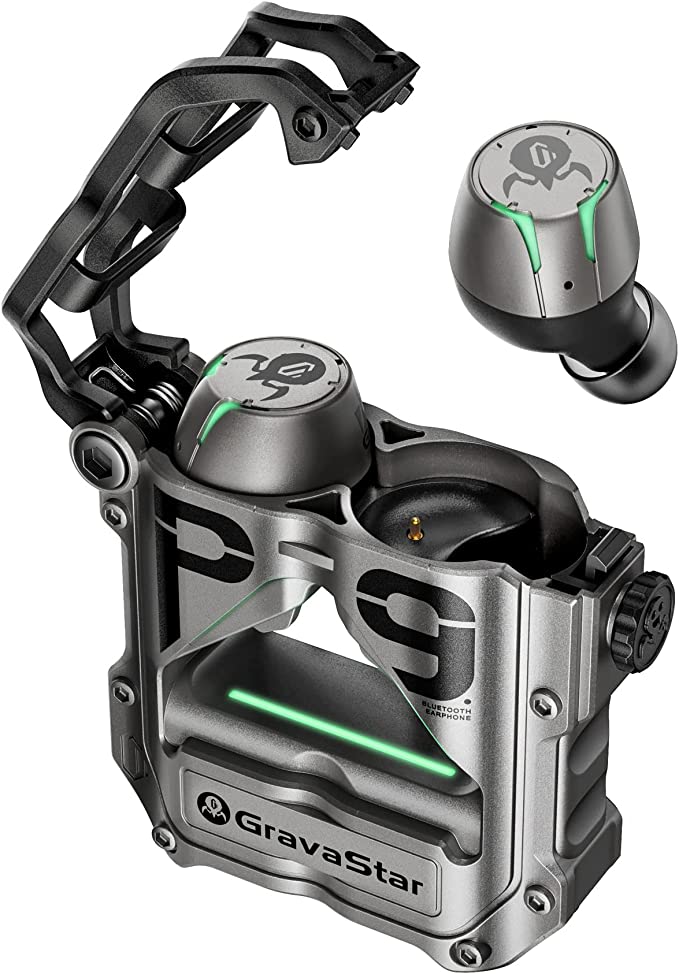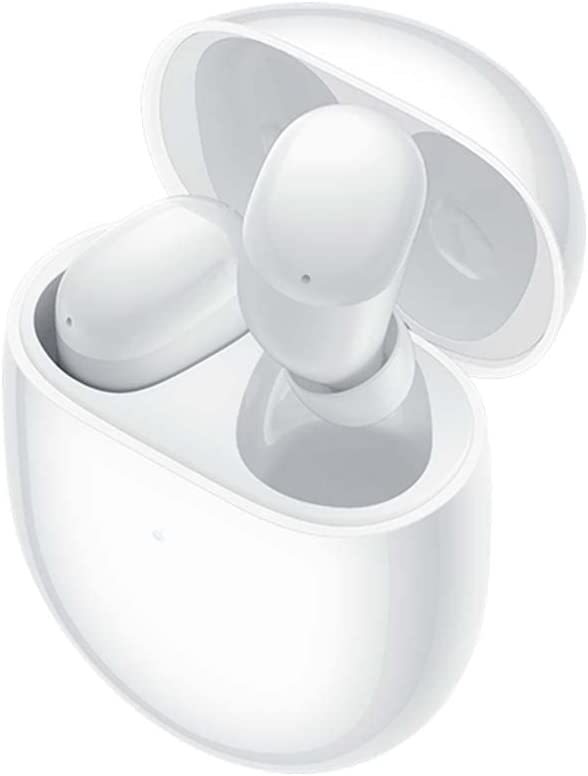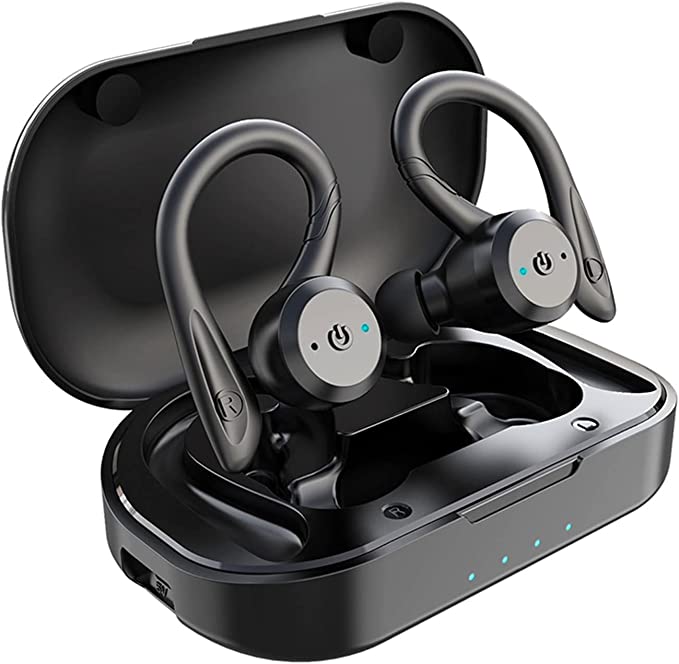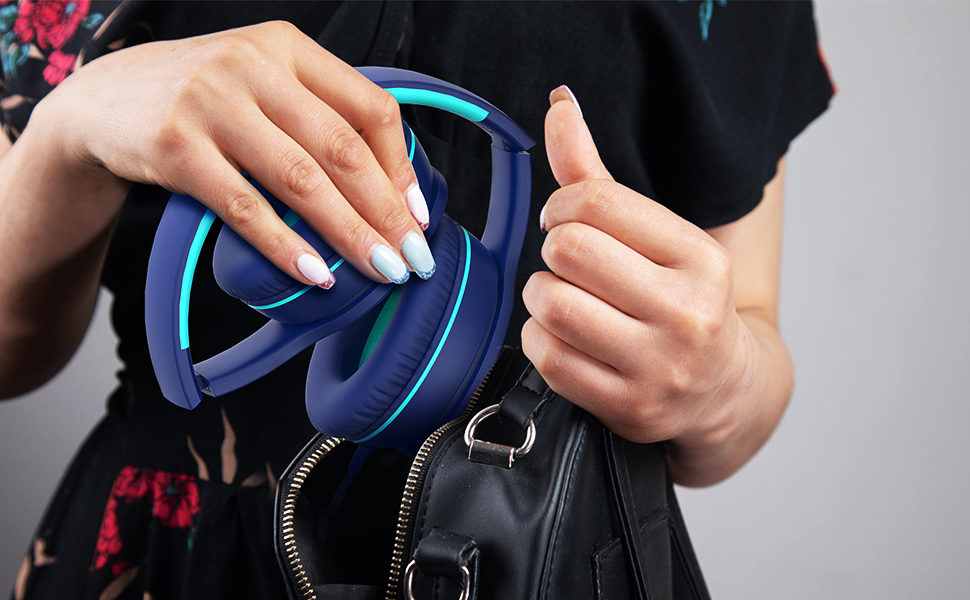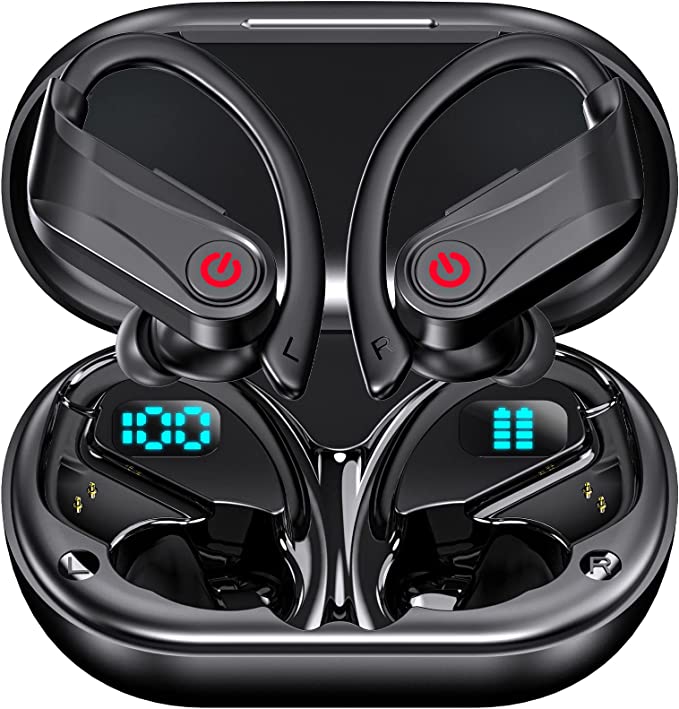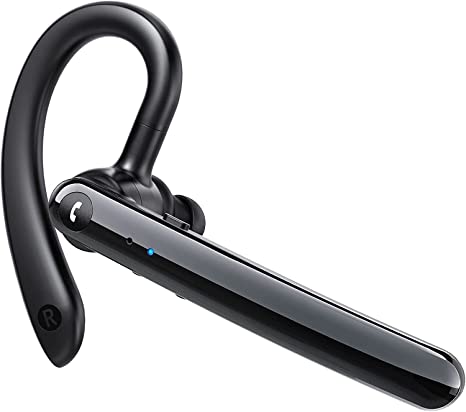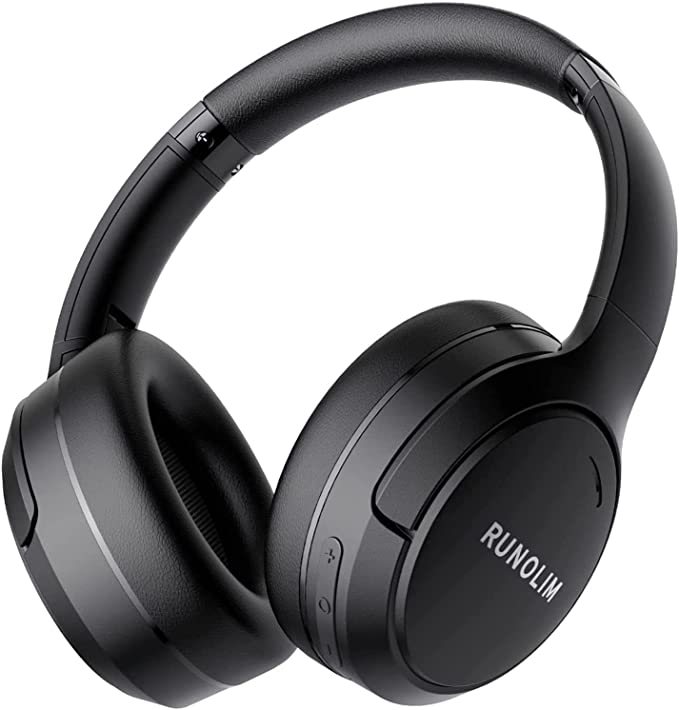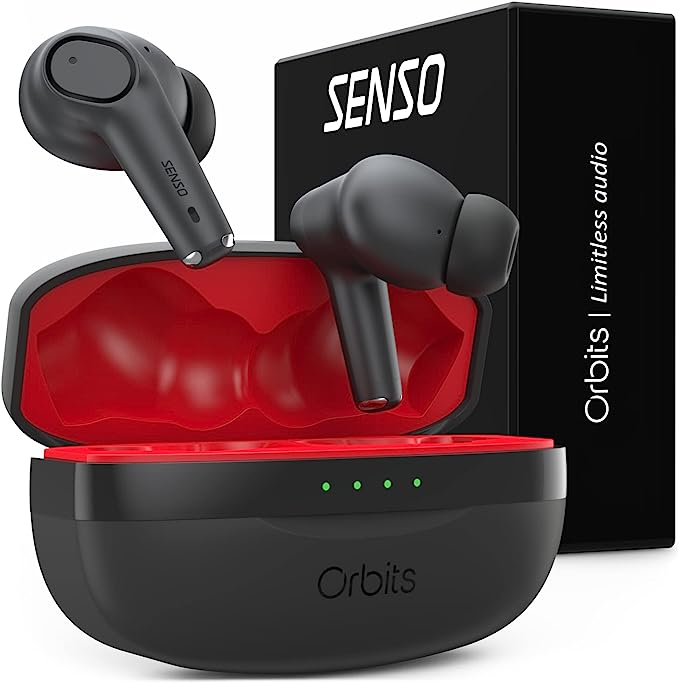KNZ AS3W PUREFECT Earbuds: Unpacking the Science of Immersive Sound & Silence
Update on May 29, 2025, 7:02 p.m.
Overture: The Everyday Battle for Auditory Peace
In the grand, cacophonous theatre of modern life, our ears are constantly under siege. From the rumbling bass of a city bus to the incessant chatter of an open-plan office, or even the low hum of household appliances, our personal soundscapes are rarely our own. This relentless barrage of noise isn’t just annoying; it can be genuinely fatiguing, chipping away at our focus, our calm, and sometimes, our sheer enjoyment of the moment. We crave an auditory sanctuary, a personal bubble where we can choose what we hear – be it the intricate layers of our favorite symphony, the crucial details of a podcast, or simply the soothing balm of silence itself.
True wireless earbuds have emerged as valiant knights in this quest for auditory control. These tiny technological marvels promise to snip the cords of distraction and deliver a personalized audio experience. Among the ever-expanding legion of contenders is the KNZ AS3W PUREFECT True Wireless Earbuds. What piques curiosity here isn’t just its roster of contemporary features, but its accessible $29.99 price tag, as per its product listing. This invites a compelling question: can a product at this price point genuinely deliver a taste of premium silence and immersive sound? Let’s embark on an exploration, not just of features, but of the science and thoughtful engineering that might make this possible.

First Impressions: What Makes the KNZ AS3W PUREFECT Tick?
A glance at the KNZ AS3W PUREFECT’s feature list reveals a suite of technologies typically associated with a more premium investment. We see promises of Hybrid Active Noise Cancellation (ANC) aiming to quell the outside world by a stated maximum of 38dB, sizeable 12mm low-distortion composite dynamic drivers for rich sound, the modern efficiency of Bluetooth 5.2 for connectivity, the convenience of both wireless and USB-C charging, and an IPX5 rating for water resistance. The product information also highlights a “6Mic active noise cancelling” system and a “3 mic system” designed for clear phone calls through Environmental Noise Cancellation (ENC).
This assembly of features, particularly at its $29.99 market position, sets an intriguing stage. It’s easy to list specifications, but the real story lies beneath the surface. What scientific principles allow these earbuds to hush a noisy environment? How do those 12mm drivers translate a digital signal into an emotive auditory experience? And how do all these components work in concert to serve the everyday listener? This journey is about unpacking that “how” and “why.”

Engineering Your Cone of Silence: The Magic and Method of Hybrid Active Noise Cancellation (ANC)
One of the most sought-after features in modern audio gear is Active Noise Cancellation, and the KNZ AS3W PUREFECT steps into this arena with a “Hybrid ANC” system. But before we delve into how it works, let’s appreciate why we so desperately need it.
Understanding Our Nemesis: The Science of Noise
Noise, in scientific terms, is simply unwanted sound. Its impact is measured in decibels (dB), a logarithmic unit where a small numerical increase can mean a large jump in perceived loudness. For instance, a quiet library might be around 30-40dB, while a busy street can easily exceed 80dB. Prolonged exposure to even moderate noise levels can elevate stress and diminish concentration. ANC technology is our David against this Goliath of daily din.

The Anti-Noise Ballet: How Hybrid ANC Wages War on Unwanted Sound
At its core, ANC is a marvel of acoustic engineering that doesn’t just block sound, but actively cancels it. Imagine an annoying sound wave traveling towards your ear. ANC introduces another sound wave, precisely crafted to be the mirror image – or “anti-phase” – of the first. When these two waves meet, they effectively neutralize each other, much like +1 and -1 summing to zero. This is the principle of destructive interference.
The “Hybrid” in Hybrid ANC refers to a sophisticated dual-microphone approach for detecting and cancelling noise:
- The Outer Guards (Feedforward Microphones): Positioned on the exterior of the earbuds, these microphones are the first line of defense. They listen to the ambient noise before it reaches your ear canal, get a “preview” of the enemy, and pass this information to the ANC processor.
- The Inner Sentinels (Feedback Microphones): Located inside the ear cup, close to your ear, these microphones play a crucial clean-up role. They detect any noise that might have slipped past the initial feedforward cancellation, as well as any noise generated by the earbud itself or resonances within your ear canal. This feedback loop allows the system to fine-tune the anti-noise signal for more comprehensive cancellation.
The KNZ AS3W PUREFECT’s product information mentions an “Industry-leading 6Mic active noise cancelling wireless earbuds.” While the precise allocation of these six microphones (likely three per earbud) isn’t detailed, a hybrid system would typically dedicate at least one external and one internal microphone per earbud specifically to the ANC task. The remaining microphones would contribute to voice pickup for calls (which we’ll discuss under ENC).
Decoding “Up to 38dB”: What That Reduction Really Feels Like
The claim of reducing noise by “up to a maximum 38dB” is significant. To put this into perspective, a 10dB reduction is generally perceived by the human ear as halving the loudness. Therefore, a 30dB reduction would make a sound feel roughly one-eighth as loud, and 38dB pushes this even further. This level of reduction can transform a roaring airplane cabin into a manageable hum, or the clatter of a busy café into a distant murmur, allowing for significantly lower listening volumes for your actual audio content, which is healthier for your ears. It’s particularly effective against consistent, low-frequency noises like engine drones or air conditioner hums.
When Silence Isn’t Golden: The Utility of Ambient Mode
Complete silence isn’t always desirable or safe. The KNZ AS3W PUREFECT, like many ANC earbuds, includes an Ambient Mode (also sometimes called Transparency Mode). This cleverly uses the external microphones not to cancel, but to intentionally pick up and pass through important external sounds – such as traffic noise, station announcements, or a colleague’s voice – directly into your ears, mixed with your audio if you’re listening to something. This allows you to stay aware of your surroundings without having to remove your earbuds, a crucial feature for safety and convenience. The earbuds state you can “freely switch between ANC on/off and Ambient mode via your earbuds touch button.”
User Story Snapshot
Imagine stepping onto a rattling subway train. The screech of the rails and the cacophony of conversations make it impossible to enjoy your podcast. You activate the ANC on your PUREFECT earbuds. Suddenly, the worst of the low-frequency rumble subsides, the chatter fades into the background, and your podcast host’s voice becomes clear and present. Later, walking down a busy street, you switch to Ambient Mode. The music remains, but now you can clearly hear the approaching cyclist’s bell and the crosswalk signal, keeping you safe and connected to your environment. That’s the power of well-implemented ANC and Ambient Mode.
The Art of Being Heard: Environmental Noise Cancellation (ENC) for Crystal-Clear Calls
While ANC curates the soundscape for your ears, Environmental Noise Cancellation (ENC) focuses on ensuring your voice is heard clearly by the person on the other end of a call. There’s nothing more frustrating than a call plagued by background noise, forcing endless repetitions of “Can you hear me now?” The KNZ AS3W PUREFECT addresses this with what its description refers to as a “multi microphone system to reduce noise in phone mode,” specifically a “3 mic system [that] accurately reduces noise in a phone conversation.”

Not Just Silence for You, But Clarity for Them: ENC vs. ANC
It’s important to distinguish ENC from ANC. ANC creates a quiet bubble for the earbud wearer. ENC, on the other hand, uses the earbud’s microphones and sophisticated signal processing algorithms to isolate the speaker’s voice and suppress surrounding environmental sounds before the audio is transmitted to the call recipient.
The Microphone’s Focus: How ENC Isolates Your Voice
Modern TWS earbuds often employ multiple microphones in an array. For ENC, these microphones work together:
- Voice Detection: At least one microphone is typically positioned to best capture the user’s voice (e.g., at the end of a small stem, если есть, or a beamforming array focusing towards the mouth).
- Noise Detection: Other microphones pick up the ambient sounds from different angles.
- Signal Processing: The earbud’s processor then analyzes these different audio streams. Advanced algorithms can identify the unique characteristics of human speech and differentiate it from, say, wind noise, traffic sounds, or office chatter. The system then works to reduce the level of these unwanted sounds while keeping the voice clear and prominent.
The “3 mic system” mentioned for calls in the KNZ PUREFECT’s description likely refers to a dedicated set of microphones (or a subset of the total 6, if that’s the overall count) working in this manner for each earbud to enhance call clarity.
User Story Snapshot
Picture yourself trying to coordinate plans with a friend while walking through a bustling farmers market. The vendors are shouting, shoppers are chatting, and music is playing. Without good ENC, your friend would hear a muddled mess. But with an effective ENC system, your PUREFECT earbuds work to filter out much of that market clamor, allowing your voice to cut through, making the conversation smooth and effortless, as if you were in a much quieter space. Or imagine participating in an important work call from your home office, with kids playing nearby; ENC helps ensure your colleagues hear your professional input, not the domestic symphony.

The Heartbeat of Your Music: Unpacking the 12mm Drivers and the Pursuit of “True High Fidelity”
Beyond silence and call clarity, the ultimate purpose of earbuds is to deliver sound – and hopefully, great sound. The KNZ AS3W PUREFECT earbuds are equipped with “dual 12mm low-distortion composite dynamic drivers,” and claim to provide “True High Fidelity sound.” Let’s decode what this means for your listening experience.
Meet the Sound Makers: The Anatomy of a Dynamic Driver
The vast majority of headphones and earbuds, including these, use dynamic drivers to create sound. Think of a dynamic driver as a miniature loudspeaker. Its key components are:
- Diaphragm (or Cone): A thin, lightweight membrane that vibrates to produce sound waves.
- Voice Coil: A coil of fine wire attached to the diaphragm.
- Magnet: A permanent magnet that creates a magnetic field.
When an electrical audio signal (from your music player) passes through the voice coil, it becomes an electromagnet. The interaction between the voice coil’s fluctuating magnetic field and the permanent magnet’s field causes the voice coil – and thus the attached diaphragm – to rapidly move back and forth. These vibrations displace air, creating the sound waves that travel to your eardrum.
Does Size Matter? The Sonic Implications of a 12mm Driver
The “12mm” refers to the diameter of the diaphragm. In general, a larger diaphragm has the potential to move more air than a smaller one. This can be particularly beneficial for:
- Bass Response: Larger diaphragms can often reproduce lower frequencies (bass and sub-bass) with more authority, depth, and impact, making music feel fuller and more engaging.
- Soundstage: While also influenced by earbud acoustics and tuning, larger drivers can sometimes contribute to a more open and spacious soundstage, where instruments feel more distinct and spread out.
- Dynamics: The ability to handle large swings in volume (from very quiet to very loud passages) without distortion can also be enhanced by a well-designed larger driver.
However, driver size isn’t the only determinant of sound quality. The material of the diaphragm, the magnet strength, the enclosure design, and, crucially, the electronic tuning all play vital roles. A “low-distortion” claim, as made for these drivers, suggests careful engineering to minimize unwanted vibrations or artifacts that can muddy the sound.
The “Composite” Advantage: What a Specialized Diaphragm Brings to the Table
The term “composite dynamic drivers” indicates that the diaphragm isn’t made from a single, simple material like paper or basic plastic. Instead, it’s likely constructed from a blend or layering of different materials. Engineers do this to achieve a delicate balance of desirable properties:
- Lightness: A lighter diaphragm can respond more quickly to the audio signal, leading to better transient response (the ability to reproduce sharp, sudden sounds like drum hits or cymbal crashes) and clearer high frequencies.
- Rigidity (Stiffness): A stiffer diaphragm is less prone to “break-up” or deforming at high volumes or complex frequencies, which helps to reduce distortion and maintain clarity.
- Damping: Good internal damping helps the diaphragm stop vibrating quickly once the signal stops, preventing “ringing” or smearing of aural details.
Common composite materials might involve plastics like PEEK (Polyetheretherketone) layered or coated with materials like Polyurethane (PU), or even more exotic materials like Beryllium, titanium, or carbon nanotubes in higher-end drivers. While the KNZ PUREFECT’s specific composite isn’t detailed, the intent is clear: to optimize the diaphragm’s performance for a cleaner, more accurate sound reproduction across the frequency spectrum.
The Digital-to-Analog Journey: The Role of the “High-Resolution Decoder”
Your music, whether streamed or stored locally, exists as a digital file. The earbuds’ drivers, however, require an analog electrical signal to operate. This is where the “high resolution decoder built-in” comes into play. This component, more technically part of a DAC (Digital-to-Analog Converter) and amplifier system within the earbuds, is responsible for:
- Receiving the digital audio stream from your Bluetooth-connected device.
- Converting this digital data (a series of 0s and 1s) into a continuously varying analog electrical waveform.
- Amplifying this analog signal to a level sufficient to drive the 12mm dynamic drivers.
A “high-resolution” decoder suggests it’s designed to handle this conversion process with a high degree of accuracy, aiming to preserve the nuances, details, and dynamic range of the original recording. While the product information doesn’t specify supported Bluetooth codecs (like SBC, AAC, or aptX), a capable decoder is essential regardless of the codec to minimize conversion errors and artifacts that could degrade sound quality. It aims to ensure that what you hear is as close as possible to what the artist and sound engineers intended.
“True High Fidelity” in a True Wireless World: Aspirations and Realities
The term “High Fidelity” (Hi-Fi) traditionally means sound reproduction that is highly faithful to the original performance. Achieving true, audiophile-grade Hi-Fi in compact, battery-powered true wireless earbuds presents numerous engineering challenges – from wireless bandwidth limitations to the tiny acoustic spaces.
When a product like the KNZ AS3W PUREFECT claims “True High Fidelity sound,” it’s best understood as an aspiration towards delivering a listening experience that is clear, balanced, detailed, and engaging, striving to rise above basic audio reproduction. The combination of 12mm composite drivers and a high-resolution decoder represents the technical foundation for pursuing this goal within the constraints of the TWS form factor and its price segment. The actual perceived fidelity will also depend on the quality of the source audio, the Bluetooth codec in use, the acoustic seal in the listener’s ear, and individual hearing perception.
User Story Snapshot
You settle in for your evening unwind, cueing up a complex orchestral piece or perhaps a bass-heavy electronic track. With the PUREFECT earbuds, the aim of the 12mm drivers is to let you feel the rumble of the double basses or the punch of the kick drum, while the composite diaphragm and decoder work to keep the delicate flute melodies or intricate synth textures clear and distinct. It’s about moving beyond just hearing notes to experiencing the emotion and energy woven into the music.
The Unseen Backbone: Bluetooth 5.2 and the Quest for Seamless Connection
All these sophisticated audio features would be moot without a reliable way to get the sound from your phone, tablet, or laptop to the earbuds. The KNZ AS3W PUREFECT employs Bluetooth 5.2, a relatively recent iteration of the ubiquitous wireless standard, promising a more robust and efficient connection.
From Cable Chains to Wireless Freedom: A Brief Nod to Bluetooth’s Evolution
It’s easy to take Bluetooth for granted, but this short-range wireless technology, named after a 10th-century Danish king, Harald Bluetooth (famed for uniting Danish tribes, just as Bluetooth aims to unite devices), has undergone significant evolution. Early versions were often plagued by dropouts, limited range, and high power consumption. Each new version has brought improvements.
Bluetooth 5.2: The Triple Threat of Stability, Speed, and Efficiency
Bluetooth 5.2, specifically, introduces several key enhancements relevant to the true wireless earbud experience:
- Improved Connection Stability and Range: While range is always affected by environment, Bluetooth 5.2 generally offers more resilient connections, meaning fewer annoying audio stutters or dropouts, even in moderately crowded wireless environments. This is partly thanks to features like LE Power Control, which helps devices dynamically optimize transmission power.
- Lower Energy Consumption (LE Audio capabilities): Bluetooth 5.2 is a cornerstone of LE Audio, the next generation of Bluetooth audio. A key feature of LE Audio is the LC3 (Low Complexity Communication Codec), which is designed to deliver good audio quality at significantly lower data rates (and thus lower power consumption) compared to the standard SBC codec. While the KNZ PUREFECT product page doesn’t explicitly state LC3 support (this requires both the source device and earbud to support LE Audio profiles), the underlying Bluetooth 5.2 hardware provides the foundation for such power efficiencies. This contributes directly to longer battery life for the earbuds.
- Enhanced Data Broadcasting (Isochronous Channels): Bluetooth 5.2 introduced isochronous channels, which are crucial for features like Auracast™ broadcast audio (allowing a single source to stream audio to an unlimited number of Bluetooth receivers – think public announcements in airports or multi-listener silent disco setups). While not a direct feature claim for these specific earbuds, it showcases the advanced capabilities of the Bluetooth 5.2 standard.
- Faster Pairing: The product mentions “auto-pairing,” and newer Bluetooth versions generally streamline the initial connection process and subsequent re-connections when you take the earbuds out of their case.
For the KNZ AS3W PUREFECT user, Bluetooth 5.2 translates to a more hassle-free and dependable listening experience. The connection should feel more like an invisible, reliable tether to your audio source.
User Story Snapshot
You take your PUREFECT earbuds out of their charging case. They instantly power on and connect to your smartphone before you’ve even fully settled them in your ears – that’s the convenience of modern Bluetooth. You leave your phone on your desk and walk to the kitchen to grab a drink; the music continues to play without a hiccup, thanks to the stable connection. This seamlessness is what Bluetooth 5.2 aims to provide.
Powering Your Day (And Night): Battery Life and Charging Versatility
A common anxiety with true wireless earbuds is battery life. No one wants their audio sanctuary to abruptly vanish mid-song or mid-call. The KNZ AS3W PUREFECT addresses this with a claimed total playtime of “up to 35 hours… with the pocket-friendly charging case,” and offers both wireless and USB-C charging.
The 35-Hour Promise: Deconstructing Total Playtime
It’s important to understand that the 35-hour figure is the combined battery life – the earbuds themselves hold a certain amount of charge for a single listening session, and the charging case carries multiple additional charges to replenish them. The product listing for the KNZ PUREFECT doesn’t specify the earbud-only playtime per charge (the original draft article you provided mentioned “up to 8 hours,” which is a respectable figure if accurate, but this isn’t directly in the Amazon source text).
Let’s assume, for illustrative purposes, an earbud-only playtime of around 5-8 hours (a common range). The charging case would then hold enough power for approximately 3-6 additional full charges (e.g., if earbuds last 7 hours, the case offers roughly 4 more charges to reach 35 hours total). This means that for many users, a fully charged case and earbuds could last several days of typical use before the case itself needs recharging. This extended total playtime is crucial for travel, long workdays, or simply reducing the frequency of having to think about charging.
The Convenience of “Topping Up”
The beauty of the TWS system is the “top-up” nature. When you’re done listening for a bit, you pop the earbuds back into their case, and they immediately start recharging from the case’s internal battery, ensuring they are ready for your next listening session.
Cutting the Cord (Again): The Simplicity of Wireless Charging
The KNZ PUREFECT charging case supports wireless charging. This almost certainly means it’s compatible with the Qi (pronounced “chee”) wireless charging standard, which is the dominant global standard used by most smartphones and wireless charging pads.
Wireless charging works on the principle of electromagnetic induction. Inside a Qi charging pad is a transmitter coil, and inside the PUREFECT’s case is a receiver coil. When you place the case on the pad:
- The pad’s transmitter coil generates an oscillating magnetic field.
- This magnetic field induces an electrical current in the receiver coil within the earbud case.
- This induced current is then used to charge the case’s internal battery.
The primary benefit is convenience. No fumbling with cables; just place the case on a pad (often shared with your phone) and let it charge. It’s a small touch that adds to the overall ease of use.
The Modern Mainstay: USB-C for Reliable Wired Charging
For wired charging, the case features a USB-C port. This is now the widely adopted standard for modern electronics, and for good reason:
- Reversible Connector: No more frustratingly trying to plug the cable in the “right way” – USB-C plugs in either way.
- Faster Charging Potential: USB-C ports can support higher power delivery standards, potentially allowing the case to recharge more quickly than older micro-USB ports (though actual speed also depends on the charger and cable used).
- Universality: Many of your other devices (phones, laptops, tablets) likely also use USB-C, meaning you might only need one type of cable for multiple gadgets.
User Story Snapshot
You’re heading out for a weekend trip. You grab your fully charged KNZ PUREFECT case, confident that its 35 hours of total playtime will easily see you through. During the train journey, you enjoy several hours of music. Upon arrival, you simply place the case on the wireless charging pad in your hotel room – no need to dig out a specific cable. This effortless power management lets you focus on your trip, not on your earbud’s battery levels.
Built for Comfort, Ready for Action: Ergonomics and IPX5 Resilience
Beyond the electronics, the physical design of earbuds plays a massive role in their usability. Comfort for long listening sessions and durability for active lifestyles are key considerations. The KNZ AS3W PUREFECT highlights an ergonomic design approach and an IPX5 water resistance rating.
The “Thousand-Ear” Approach: Crafting a Fit for Many
The product description states, “We scanned thousands of ears to create the best-fitting earbuds, with a special grip structure to make sure they stay in while you move.” While “scanning thousands of ears” is a somewhat common marketing phrase, it points to a crucial aspect of earbud design: ergonomics.
Human ears come in a vast array of shapes and sizes. Designing a “one-size-fits-most” earbud that is both comfortable and secure is a significant challenge. This process typically involves:
- Data Collection: Creating 3D scans or impressions of numerous human ears to understand common anatomical features, pressure points, and optimal contact areas.
- Computer Modeling: Using this data to create and refine 3D models of the earbud shape, aiming for a form that distributes pressure evenly and sits snugly within the concha (the outer bowl of the ear) and ear canal.
- Prototyping and Testing: Creating physical prototypes and testing them with real users to gather feedback on comfort, stability during movement, and ease of insertion/removal.
- Eartip Optimization: Providing a selection of different sized (and sometimes material) eartips (usually silicone) is essential. A proper eartip seal is critical not only for comfort and security but also for optimal bass response and effective noise isolation (both passive and active).
The “special grip structure” mentioned likely refers to subtle contours or textured surfaces on the earbud housing designed to provide a little extra purchase against the skin of the ear, helping to prevent them from slipping out, especially during workouts.
Beyond the Fit: The Importance of a Secure Seal for Sound and ANC
It cannot be overstated: a good, secure seal between the eartip and your ear canal is fundamental. Without it:
- Bass frequencies leak out, leading to a thin, tinny sound.
- Passive noise isolation is compromised, meaning more external noise gets in, forcing the ANC system to work harder (or less effectively).
- Earbuds are more likely to fall out.
KNZ’s stated effort in ergonomic design, coupled with the provision of multiple eartips (as is standard), aims to help users achieve this vital seal.
Meeting the Elements: IPX5 Water Resistance Explained
For those who want to use their earbuds during exercise or don’t want to worry about a sudden rain shower, water resistance is a key feature. The KNZ AS3W PUREFECT boasts an IPX5 rating. Let’s break down what this Ingress Protection (IP) code means:
- IP: Stands for Ingress Protection.
- X: The first digit after IP refers to protection against solid particles (like dust). An ‘X’ here means the product hasn’t been officially rated for dust protection by this specific test. This doesn’t necessarily mean it has no dust protection, just that it’s not certified under that part of the IP code.
- 5: The second digit refers to protection against liquids. A ‘5’ in this position signifies that the earbuds are protected against low-pressure water jets from any direction.
What IPX5 means in practical terms:
- Sweat-proof: They should comfortably handle sweat during intense workouts.
- Rain-resistant: Light to moderate rain shouldn’t be an issue.
- Splash-proof: Accidental splashes from a tap or drink are likely fine.
What IPX5 doesn’t mean:
- Not waterproof for swimming: They are not designed to be submerged in water. Swimming with them will likely damage them.
- Not for high-pressure water: Don’t clean them under a strong tap or take them into a shower where they might be exposed to direct, forceful jets.
The IPX5 rating provides a good level of assurance for everyday active use and unexpected encounters with moisture.
User Story Snapshot
You’re halfway through an hour-long run, pushing your limits, and sweat is pouring. Your PUREFECT earbuds, thanks to their IPX5 rating and secure ergonomic fit, stay put and continue to deliver your motivational playlist without faltering. Later, you’re caught in a light drizzle on your walk home from the office; again, no need to panic and stow away your earbuds. This resilience makes them a more versatile audio companion.
Voices from the Real World: Weaving in User Perspectives
While technical specifications tell one part of the story, the experiences of actual users offer another valuable, albeit subjective, layer. The KNZ AS3W PUREFECT’s Amazon listing shows an average rating of 4.0 out of 5 stars from 20 ratings at the time the information was sourced. This is a relatively small sample size, so individual reviews carry more weight in the overall average.
The Value Proposition Echoed
A recurring theme in the positive feedback, as noted in the source data, is the strong value for money. One reviewer, G. Garcia, even commented, “These have a major pricing error - they should sell for 3 to 4 times the present price,” praising the sound as the “best I’ve heard from wireless headphones” in comparison to other specific models and highlighting the “Excellent balance of high and low frequencies.” Another, “Books Collectibles & More,” found them “super reliable in both the excellent sound quality and the long battery life” after a recommendation.
Reported Strengths
Beyond general value, specific features also garnered praise:
- Sound Quality: As mentioned, users like G. Garcia and “Books Collectibles & More” were pleased with the audio. M.S. (a Vine Voice reviewer of a free product) noted “good sound quality and has really nice bass.”
- Active Noise Cancellation: Mony found the “ANC quality” to be “Superb!” and “Comparable to those Big names.” Jeffrey P. Schneider (Vine Voice) was “pleased to find that the ANC is effective,” noting it “completely blocks the sound of my washing machine!“
- Battery Life & Charging: Long battery life was a plus for several users. The wireless charging case was specifically appreciated (“The wireless charging case is great” - Books Collectibles & More; “They can be charged on a wirless charger, also a plus” - M.S.).
- Comfort and Fit: “They fits my ears very comfortable,” said one Amazon Customer. M.S. found them “comfortable enough to wear for that long so.”
Acknowledged Hiccups and Observations
Not all experiences were flawless, which is typical for any product:
- Potential Quality Control/Reliability Issues: Seth S. reported a significant issue: “Left earbud won’t charge, turn on or pair,” leading to a 1-star review. Ann C/RM initially had a positive experience but updated it, stating, “At 100% charge, the left earpiece turns off during some conversations.” These reviews highlight that, as with many electronics, individual unit defects can occur.
- Minor Usability Quirks: M.S. pointed out some “minor things,” such as the alert voice’s volume being low and unadjustable, and slightly off English phrasing in alerts (e.g., “please charging” instead of “battery low”). While minor, these details can affect the overall polish of the user experience.
- Call Quality (Mixed): While ENC is a feature, M.S. mentioned, “there were was like 1or 2 times when the person stated they couldn’t hear me clearly during calls but it wasn’t often.” This suggests call quality might generally be adequate but not always perfect in every situation.
The Subjectivity of Sound and Experience
It’s always crucial to remember that audio perception is highly subjective. What one person considers “great bass,” another might find overwhelming or lacking. Comfort is also personal. Furthermore, a small number of reviews can be skewed by a few very positive or very negative experiences. These user perspectives provide valuable real-world context but should be weighed alongside the technical capabilities and your own needs.

Coda: Democratizing Advanced Audio – The KNZ AS3W PUREFECT in Perspective
The journey through the KNZ AS3W PUREFECT’s technological landscape reveals a compelling narrative: the increasing democratization of once-premium audio features. Hybrid Active Noise Cancellation potent enough to silence a washing machine, 12mm drivers aiming for immersive sound, the stability of Bluetooth 5.2, and the convenience of wireless charging – all bundled into a package with a $29.99 price tag – speaks volumes about the rapid evolution and accessibility of consumer audio technology.
This isn’t about claiming that an entry-level product will outperform flagship devices costing many times more; that would be an unrealistic expectation. Instead, it’s about recognizing how a thoughtfully assembled collection of modern technologies can bring tangible improvements to the everyday listening experience for a much broader audience. The ability to find a measure of tranquility on a noisy commute, to enjoy music with greater depth and clarity, or to take calls with enhanced voice intelligibility, without breaking the bank, is a significant step forward.
The KNZ AS3W PUREFECT, based on its stated specifications and the bulk of user feedback provided, appears to be a serious contender for those seeking a feature-rich audio experience on a budget. It exemplifies how complex science and engineering, from the intricacies of wave cancellation in ANC to the material science of a composite driver diaphragm, can be distilled into a compact, user-friendly device.
The world of audio technology continues its relentless march: towards even more intelligent noise cancellation, more breathtakingly realistic sound, more seamless connectivity, and more intuitive user interaction. Products like the KNZ AS3W PUREFECT serve as important milestones on that journey, reminding us that good technology isn’t just about the highest specifications, but about delivering meaningful value and enhanced experiences to as many people as possible. They invite us to listen a little closer, not just to our music, but to the quiet hum of progress itself.
